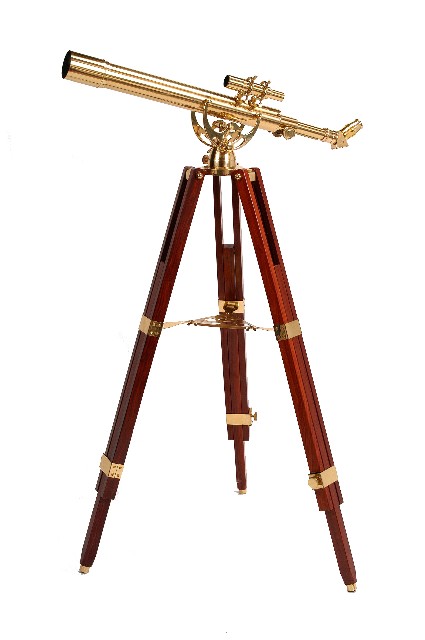
Amateur telescopes come in a wide range of prices, from a low of under $200 to a high of $5,000 and more, much more. There really is no upper limit. Someone out there will be happy to take as much money as you’d care to spend. In fact, the Beck Telescope (a Cassegrain-focus telescope with a 30” diameter primary mirror) located in Bradley Observatory at Agnes Scott College was originally owned privately by one Henry Gibson, who had it housed in a dome near his house. He sold the telescope to the College in 1947 for $15,000—a lot of money back then! The beginner need not invest in the four-digit range; however, spending less than about $300 on a new telescope (except in the case of certain rich-field instruments, which we will get to shortly) is likely to result in disappointment.
If you’ve been hitting the malls and looking at telescopes in department stores, camera stores, hobby shops, and even some optical stores, you may be surprised that most of the instruments you’ve seen will not provide you with a satisfying observing experience. The market is full of telescopes in the $100 to sub-$300 range—and they sell! But they’re mostly not worth their “bargain” prices. That’s not a subjective judgment. It’s a cold, hard fact. Here are some typical attributes of cheap telescopes:
If you’ve been hitting the malls and looking at telescopes in department stores, camera stores, hobby shops, and even some optical stores, you may be surprised that most of the instruments you’ve seen will not provide you with a satisfying observing experience. The market is full of telescopes in the $100 to sub-$300 range—and they sell! But they’re mostly not worth their “bargain” prices. That’s not a subjective judgment. It’s a cold, hard fact. Here are some typical attributes of cheap telescopes:
- A cheap, wobbly mount. If the view wiggles, you will have a very frustrating time looking at the sky, especially if there is the slightest breeze, or you bump the telescope trying to focus the image. We’ll discuss mounts in just a few minutes, but be aware that a shoddy equatorial mount is inferior to a simpler altazimuth mount—if that mount is steady and well made.
- A telescope that trumpets its magnification but makes little or no mention of its aperture. Aperture, the diameter of the telescope’s objective lens (if it’s a refractor) or primary mirror (if it’s a reflector), determines how much light you will be able to collect. After you get tired of looking at the moon, you’ll find yourself increasingly interested in the dimmer objects of the night sky. Buy the largest aperture you can afford; aperture size and component quality are far more important than magnification numbers. A 2.75-inch (70 mm) aperture is a very good minimum for a refractor, and a 4-inch (100 mm) aperture is a good minimum for a reflector. Excellent Maksutov-Cassegrain instruments start at 90 mm, but the entry-level Schmidt-Cassegrain is a 5-inch model.
- Poor optical quality. Stars should focus as bright, sharp points of light, not smears, blurs, or flares. Unfortunately, it is rarely possible to field test a telescope before you buy it, so purchase only an instrument that comes with a noquestions-asked return policy. Put the telescope through its paces by focusing on a reasonably bright star. You may want to find Altair, Betelgeuse or Arcturus, for example. On a night with good seeing, the star should focus to a clean point. Next, using the highest magnification, slightly unfocus the image by turning the focus knob first one way and then the other. With good optics that are properly collimated (the optical elements made perfectly parallel with one another), the out-of-focus image will look the same regardless of which way you turn the knob. If the two out-of-focus images are significantly different, the optical collimation is poor.
- Small eyepiece. The modern standard for an eyepiece barrel diameter is 1.25”. Two-inch diameter eyepieces are common on larger, more expensive telescopes (14” diameter mirrors and greater). A short-barrel eyepiece can restrict the field of view at low power and is generally a sign of an inferior telescope.
- A junk finderscope. The finderscope (or finder)—the small telescope attached to the side of the main telescope—is very important for locating the objects you wish to study, especially if your telescope lacks go-to capability. An inferior scope is of little use. Look for one with an aperture of at least 30 millimeters. Also make sure the bracket that mounts the finder is easily, firmly, and accurately adjustable. You’ll need to align the finderscope with the main instrument frequently. You may want to also replace the factory finderscope with a “bullseye” on the sky, powered typically by a small red LED.
- Obscure and/or skimpy instructions. Not only is a clear and ample manual an important aid to using and enjoying a telescope, it is a sign of the quality of thought that has gone into making the instrument.













